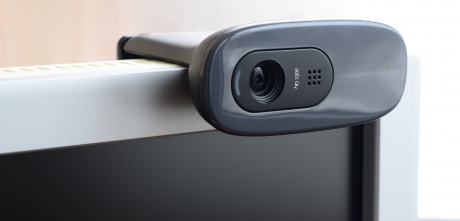
by Walter
Throughout the COVID-19 pandemic, the use of our webcam has increased exponentially. What was once just a fun add-on for a laptop or an accessory for a desktop is now a necessity. While the feeds are a massive improvement from the early days of dial-up and DSL internet, there is always room for improvement. While your internet connection is probably enough to get the job done one issue is with the camera itself.
If you’re a hobby photographer you probably know that sensor size, quality, and the ability to adjust the settings of your camera are everything. For a webcam, this is no different. A built-in webcam for a laptop is a tiny mirrorless sensor camera that has a fixed aperture. The only things that can be adjusted, and this is usually done automatically, are the shutter speed and ISO. You will notice it making adjustments for example when you first start the camera for a webinar. It generally starts as a darker image and then brightens up. If you sit in a room with variable lighting, such as a room with many windows, you will notice the image adjusts to your lighting as the lighting changes. To help your built-in camera give the best possible image sit in a room with good lighting so the camera can use the lowest ISO setting possible. High ISO is what produces that grainy look you see when people are in dark rooms. The shutter speed will also be a little faster to compensate for any movement so your viewers get a much smoother, sharper, and clearer image of you.
Another option is to get a better webcam. While most webcams boast 720HD if your viewer has a full-screen view of you the quality of the image will leave something to be desired. Not all 720 resolution is the same especially given the bitrate of most video conferences is pretty low. Low bitrate means not a lot of data is being transmitted, so the image generally is smoother and less susceptible to having issues. Now while there is a limit here, you can use a better camera with a bigger sensor size that allows it to take in more light and data. So if you’re in a poorly lit room a better webcam with a larger sensor won’t have to adjust as much to produce an image. Some even have wider or variable apertures to allow the camera to take in more light before adjusting ISO which introduces that grain or noise.
Lastly, check your settings in your video conferencing service. Some offer HD plans which have more bandwidth than their standard plan. More bandwidth means more data from that camera can be transferred through the service. So if you’re using a higher quality webcam or broadcasting from say a full-frame camera you can get that nice sharp high definition look you’re looking for.
If you have any questions please feel free to reach out to me at walter@msatp.org.
